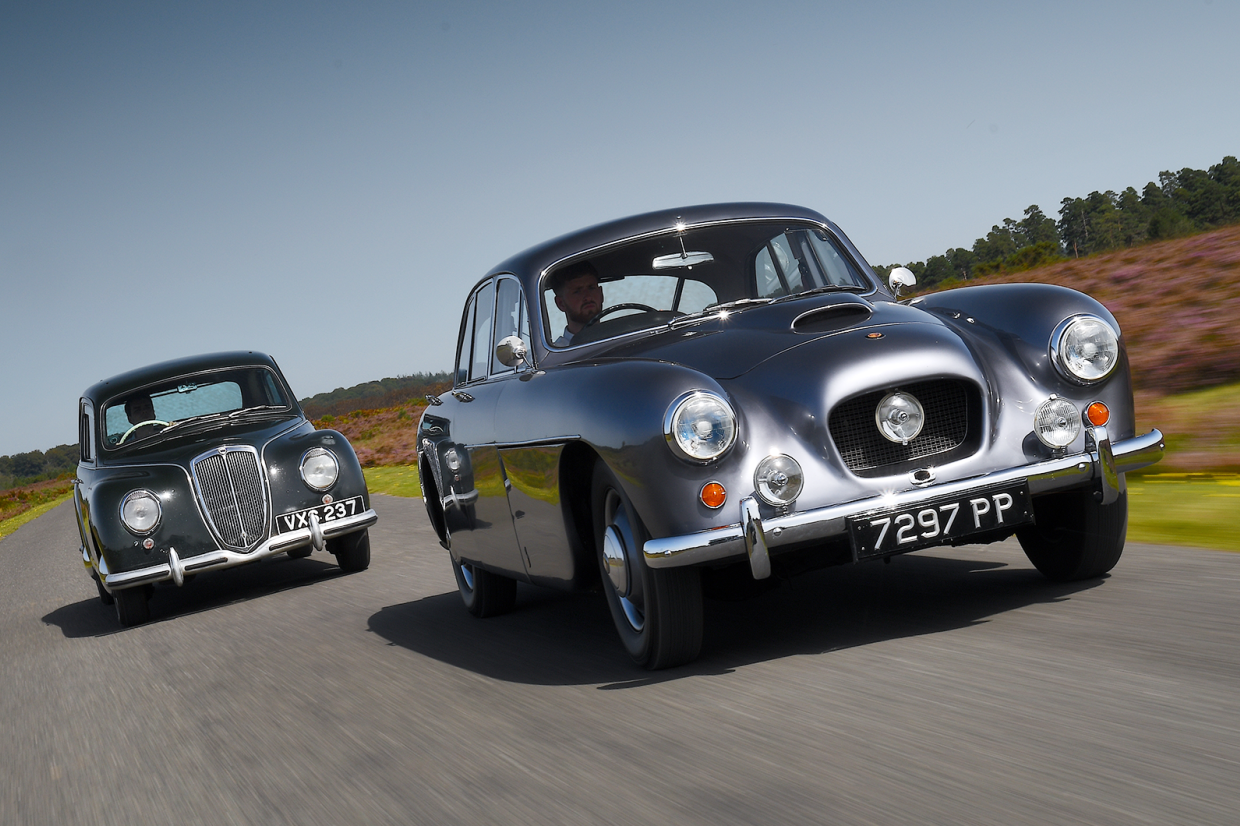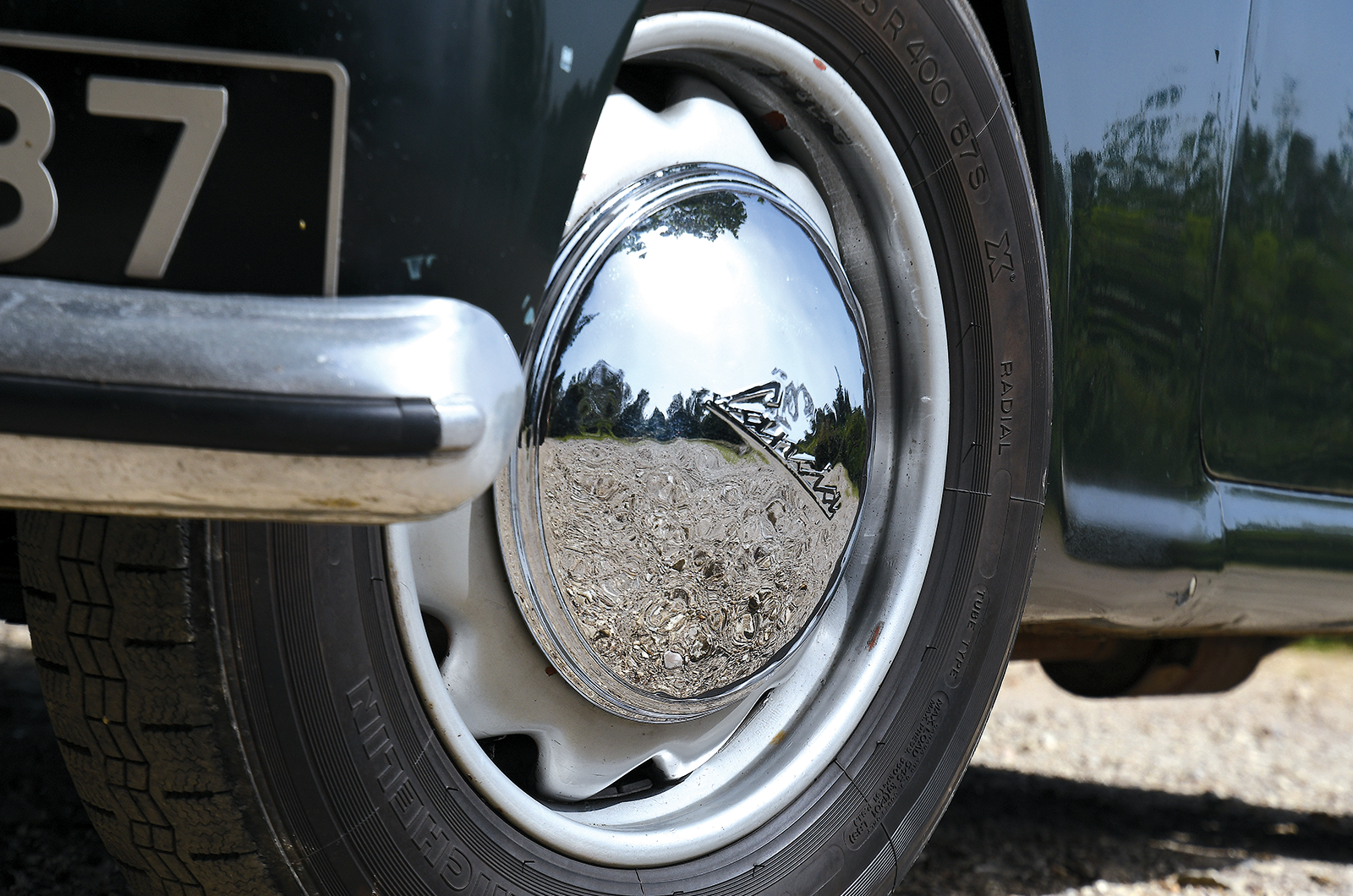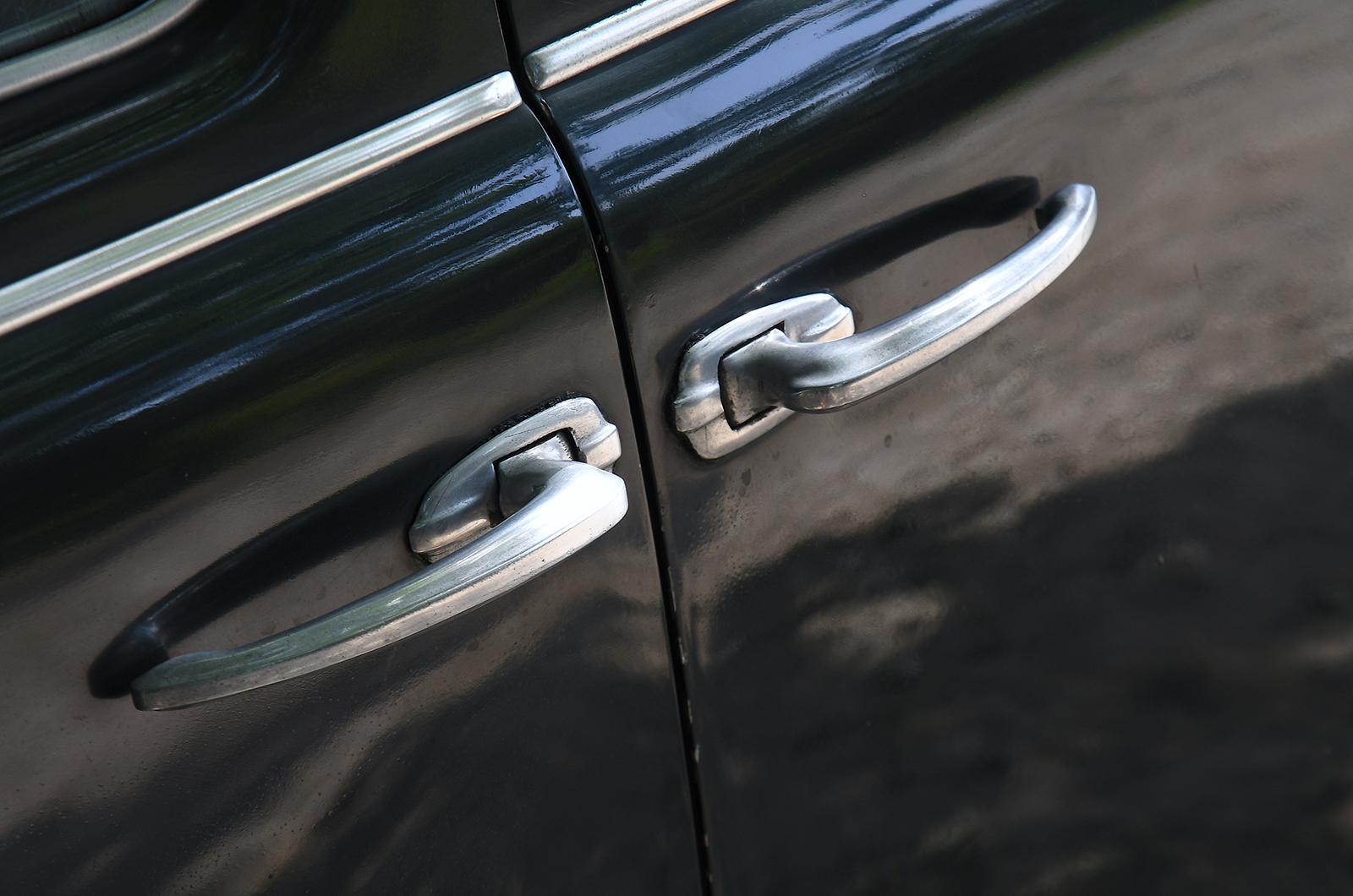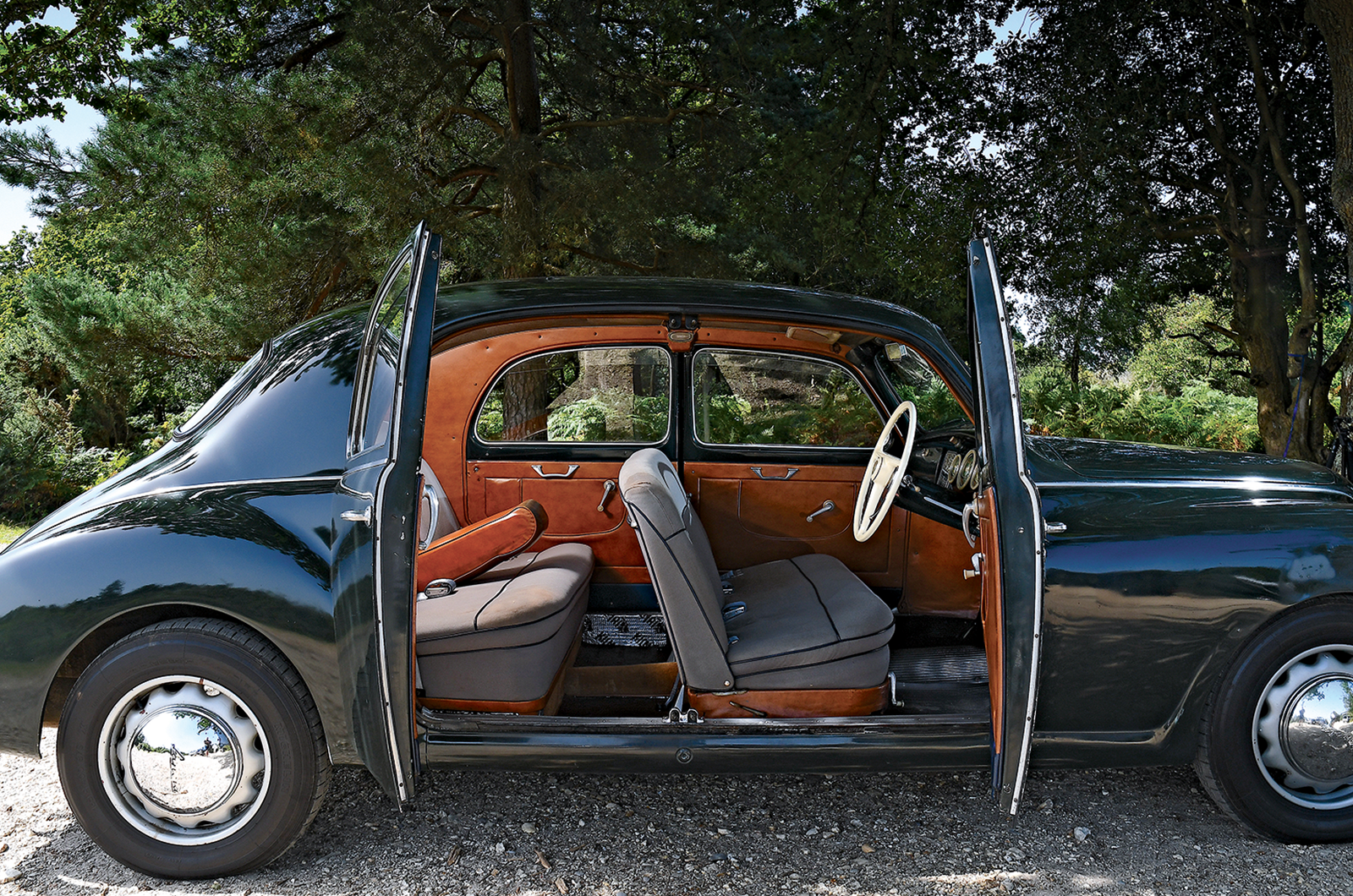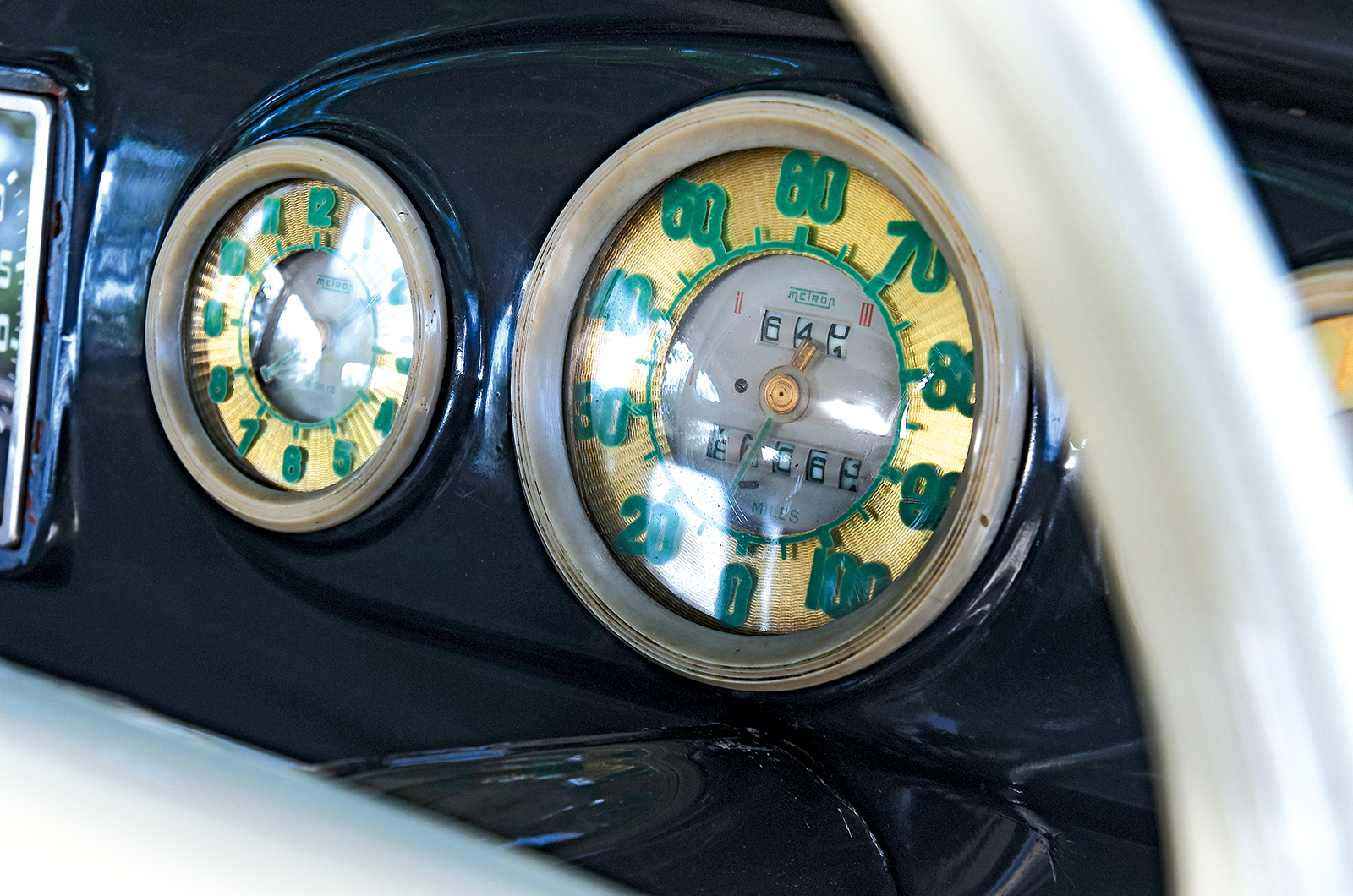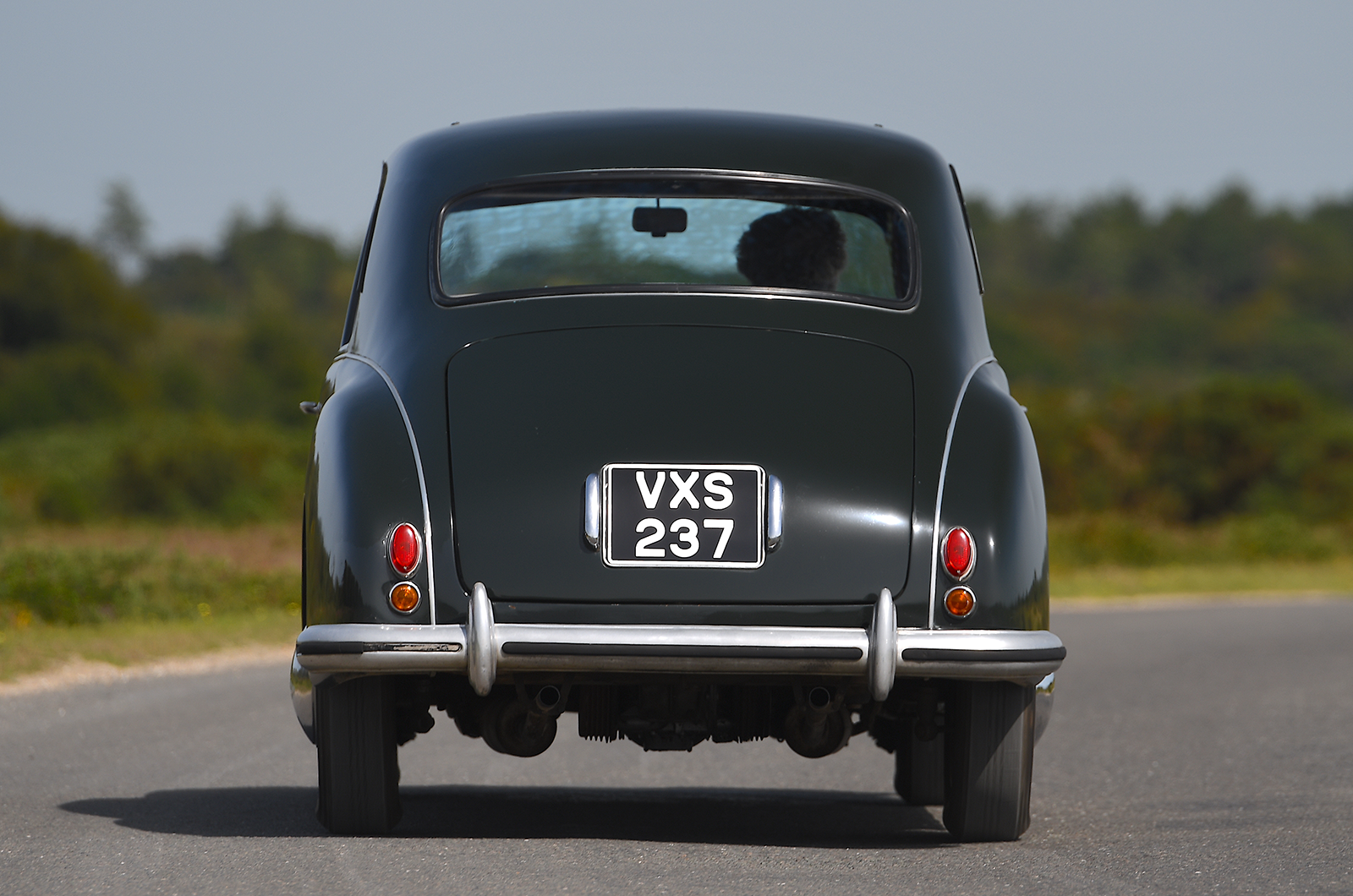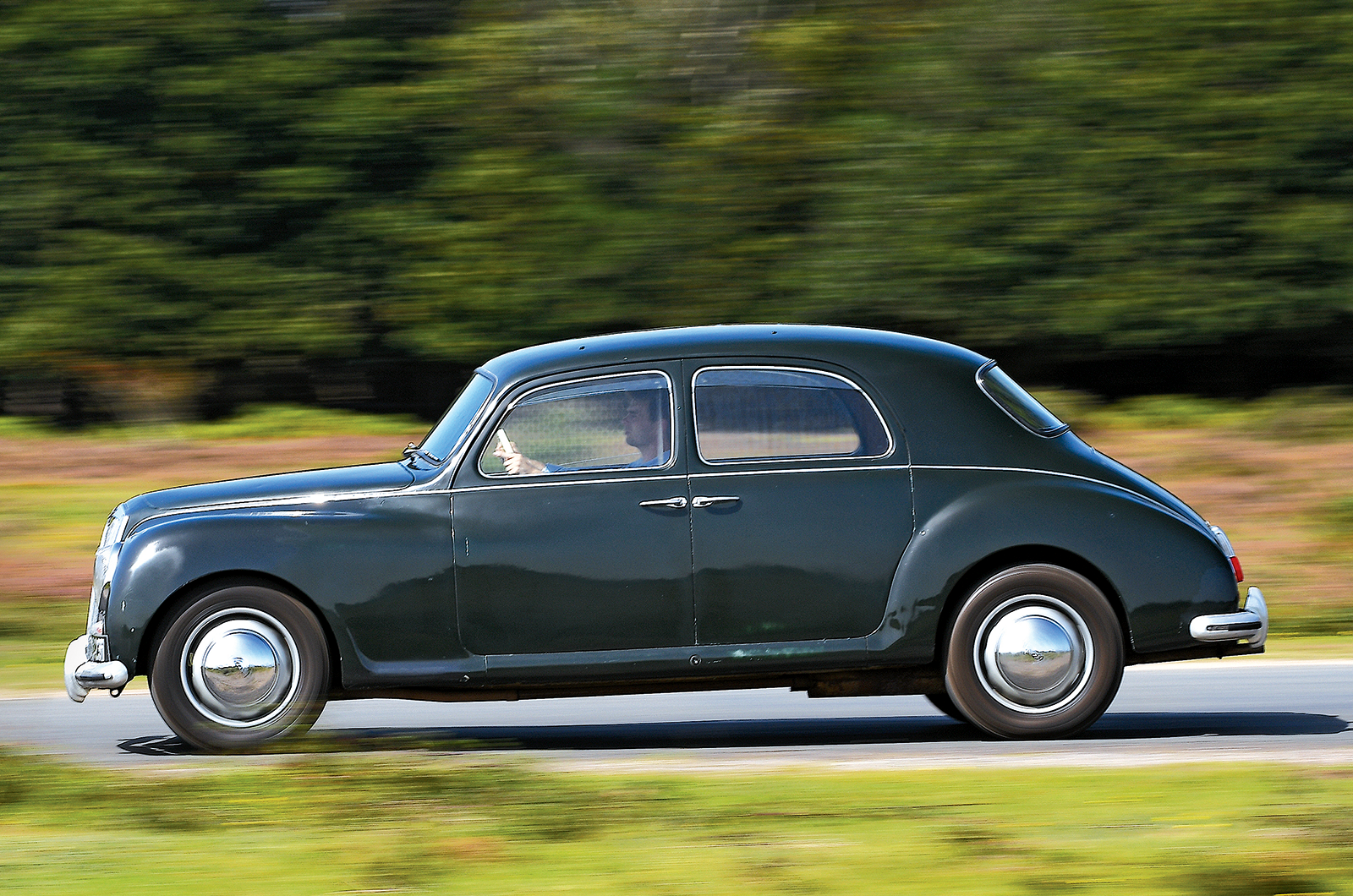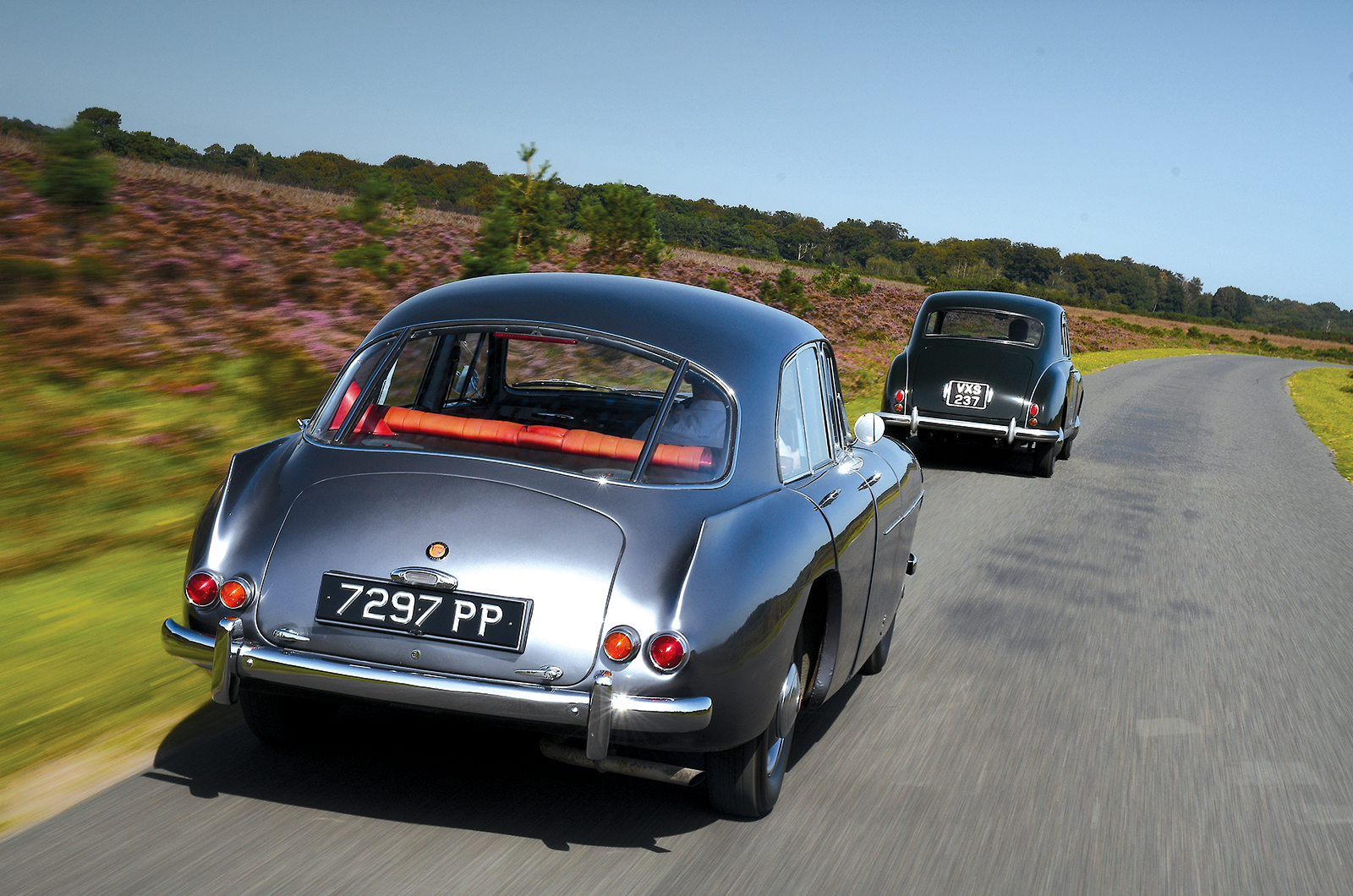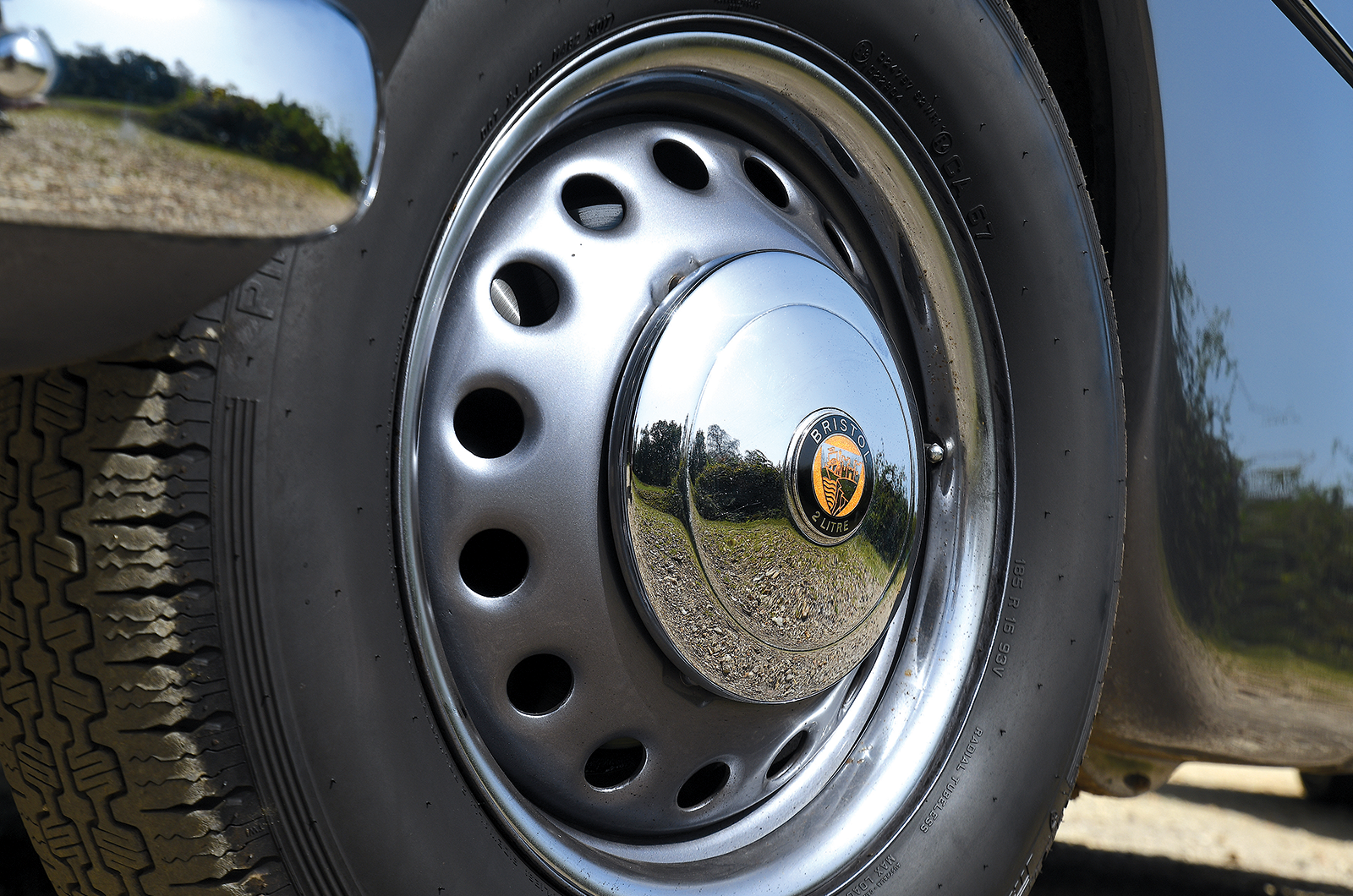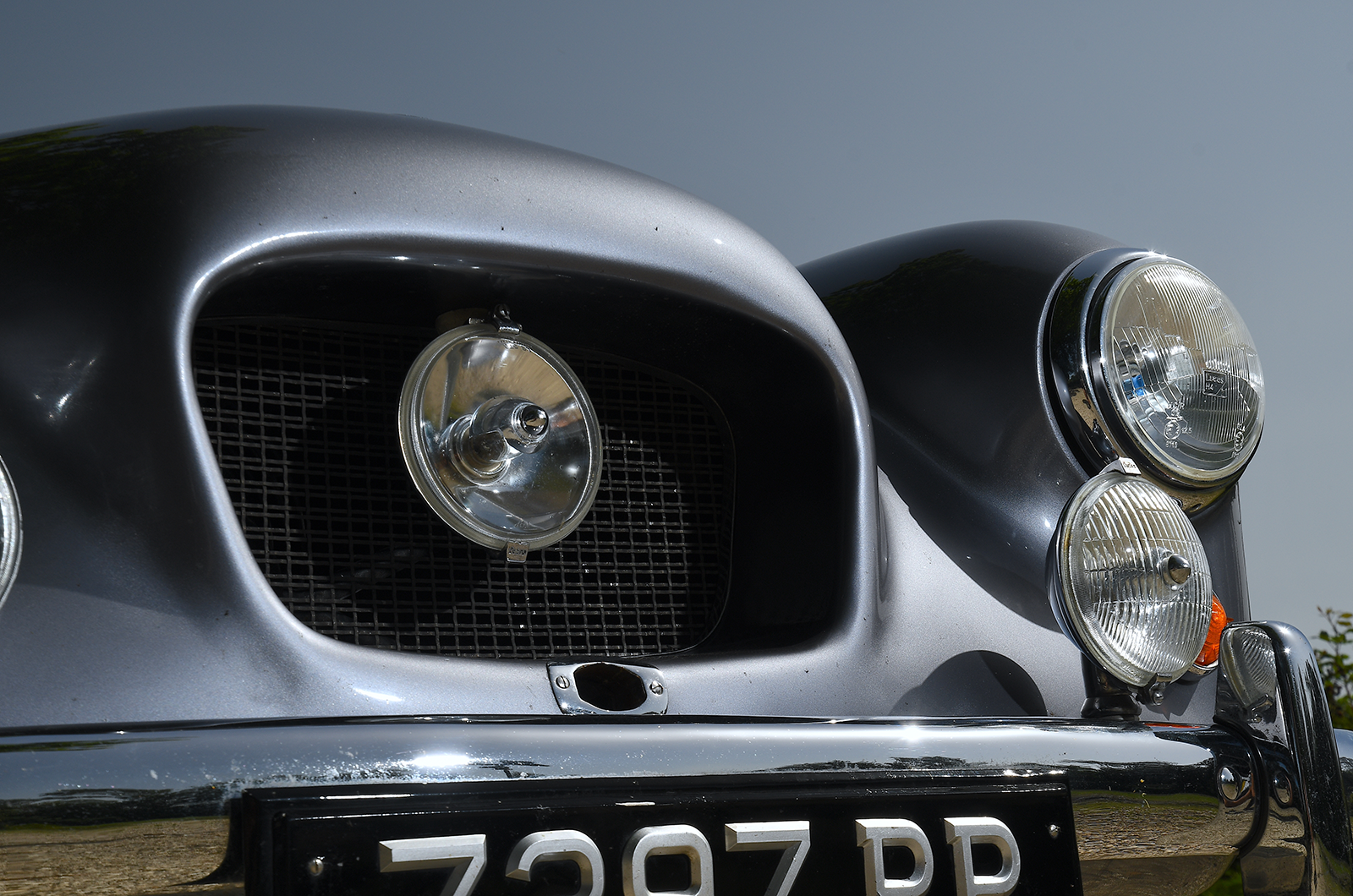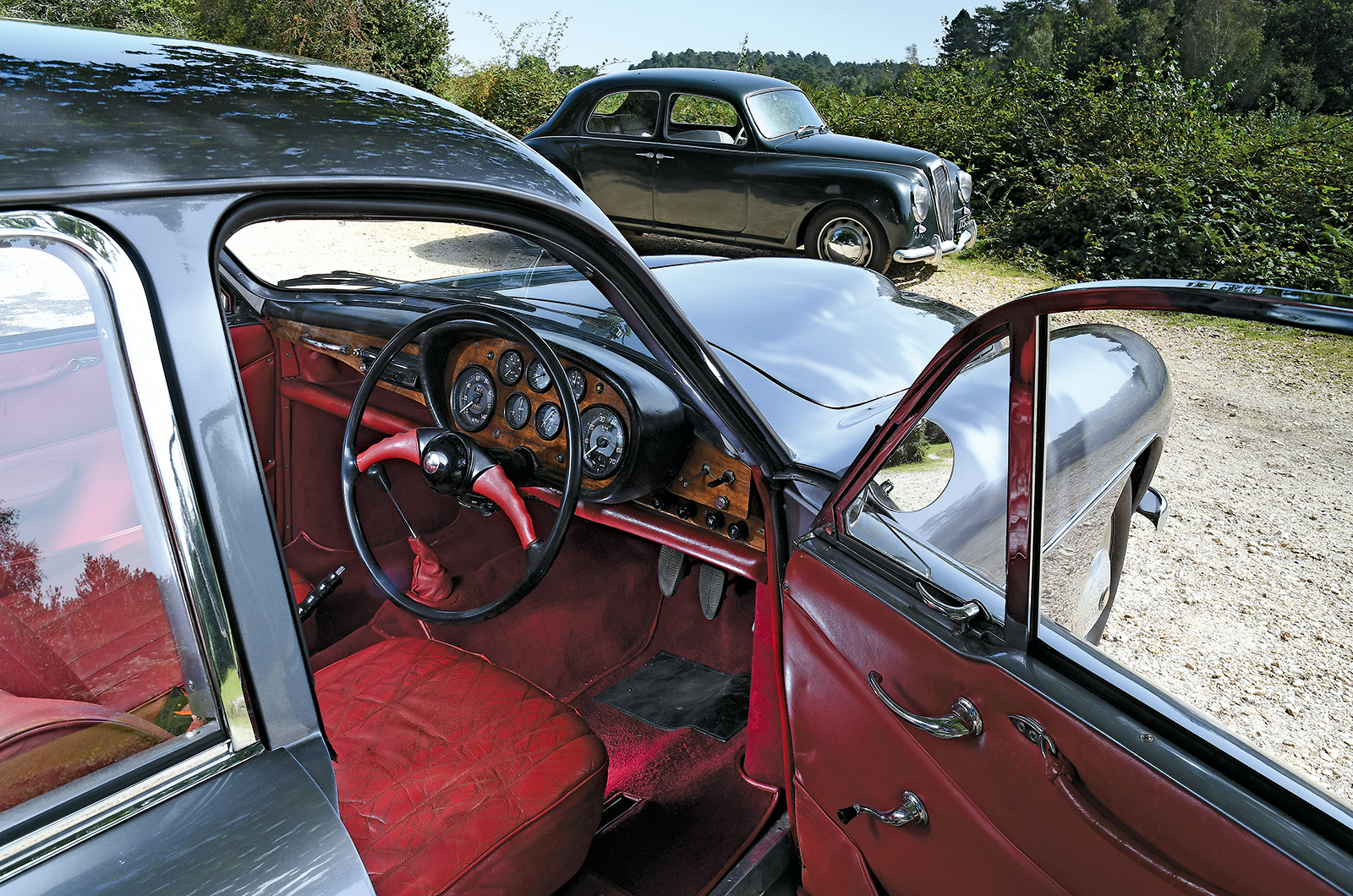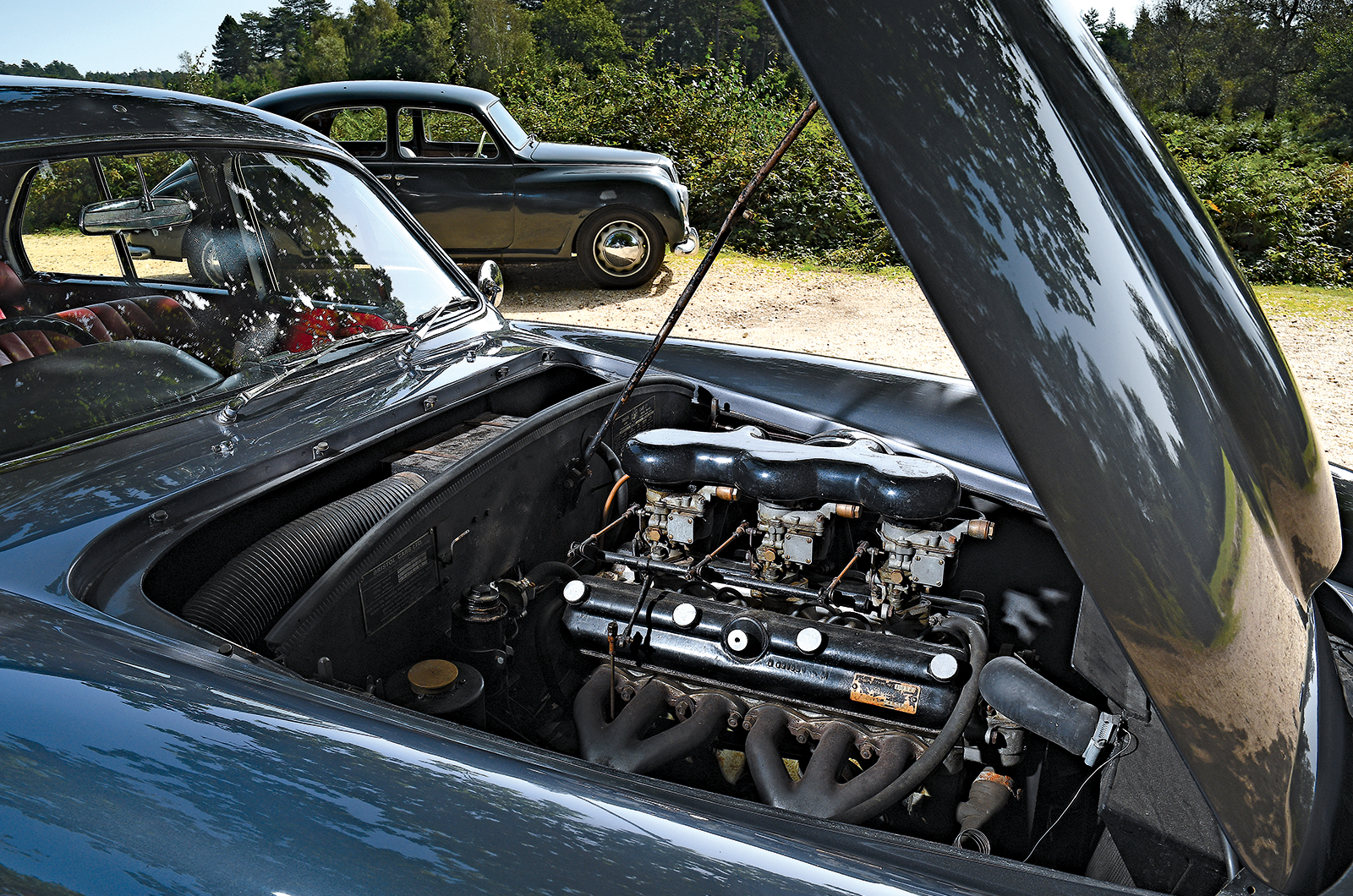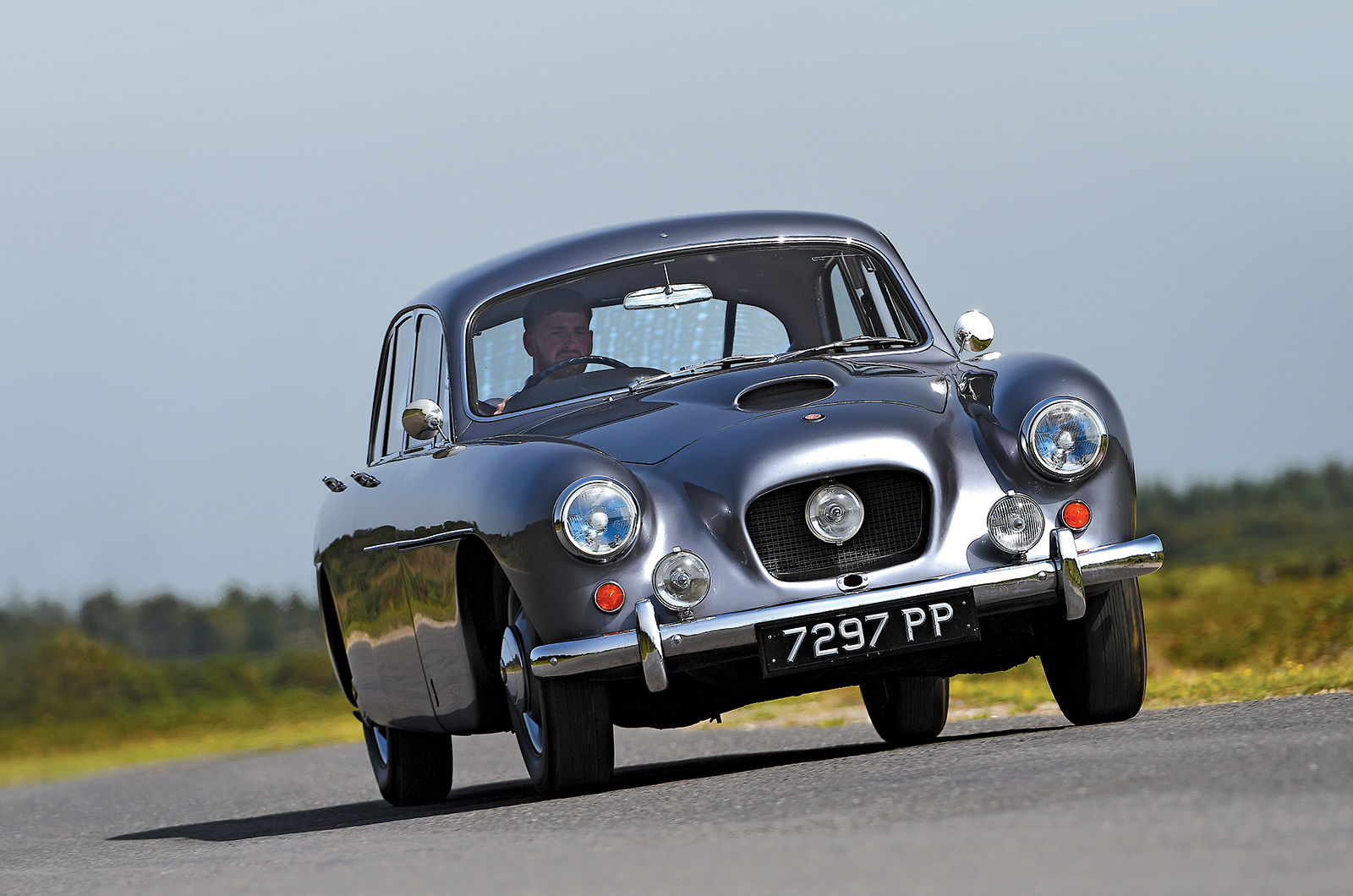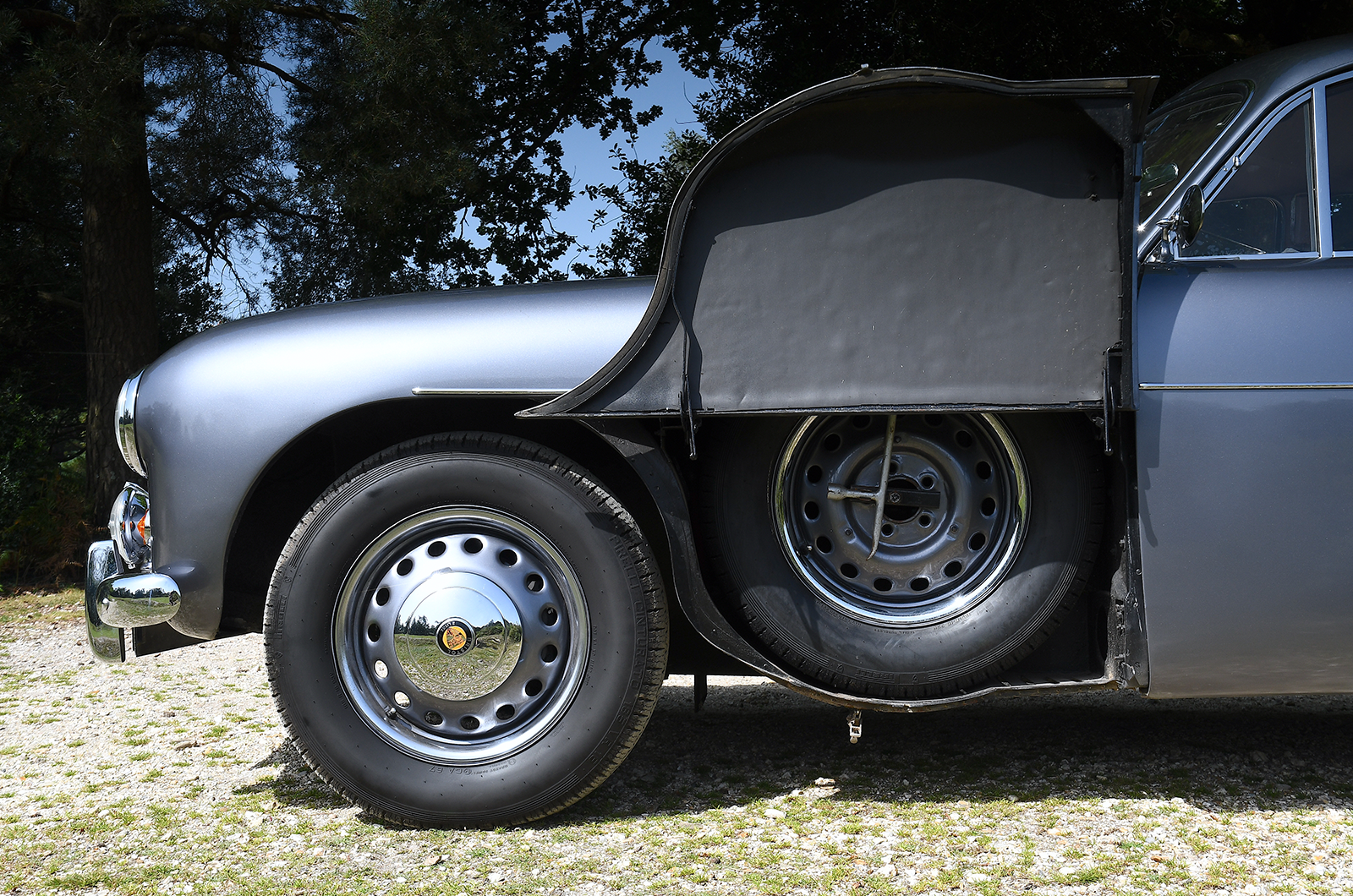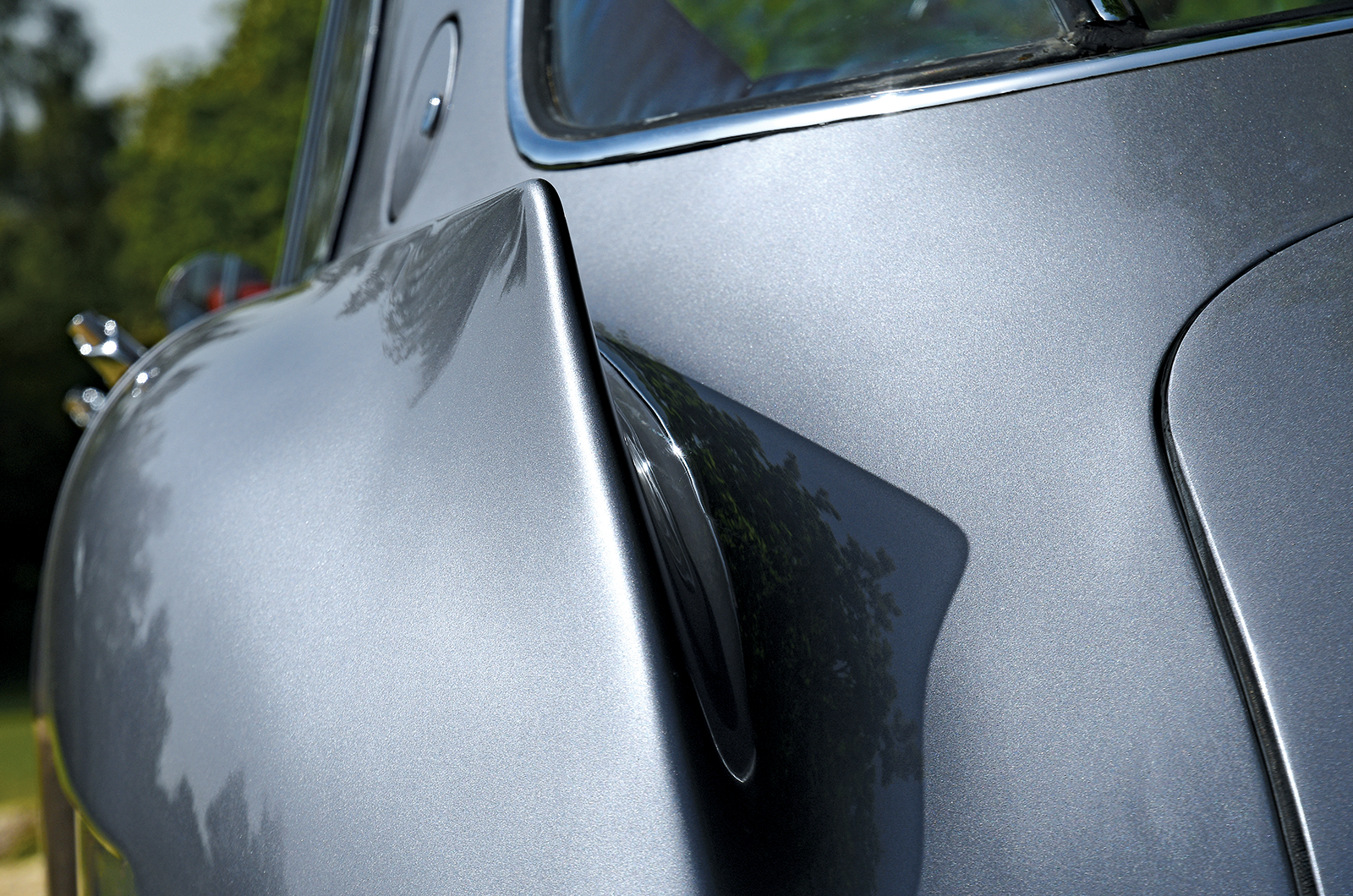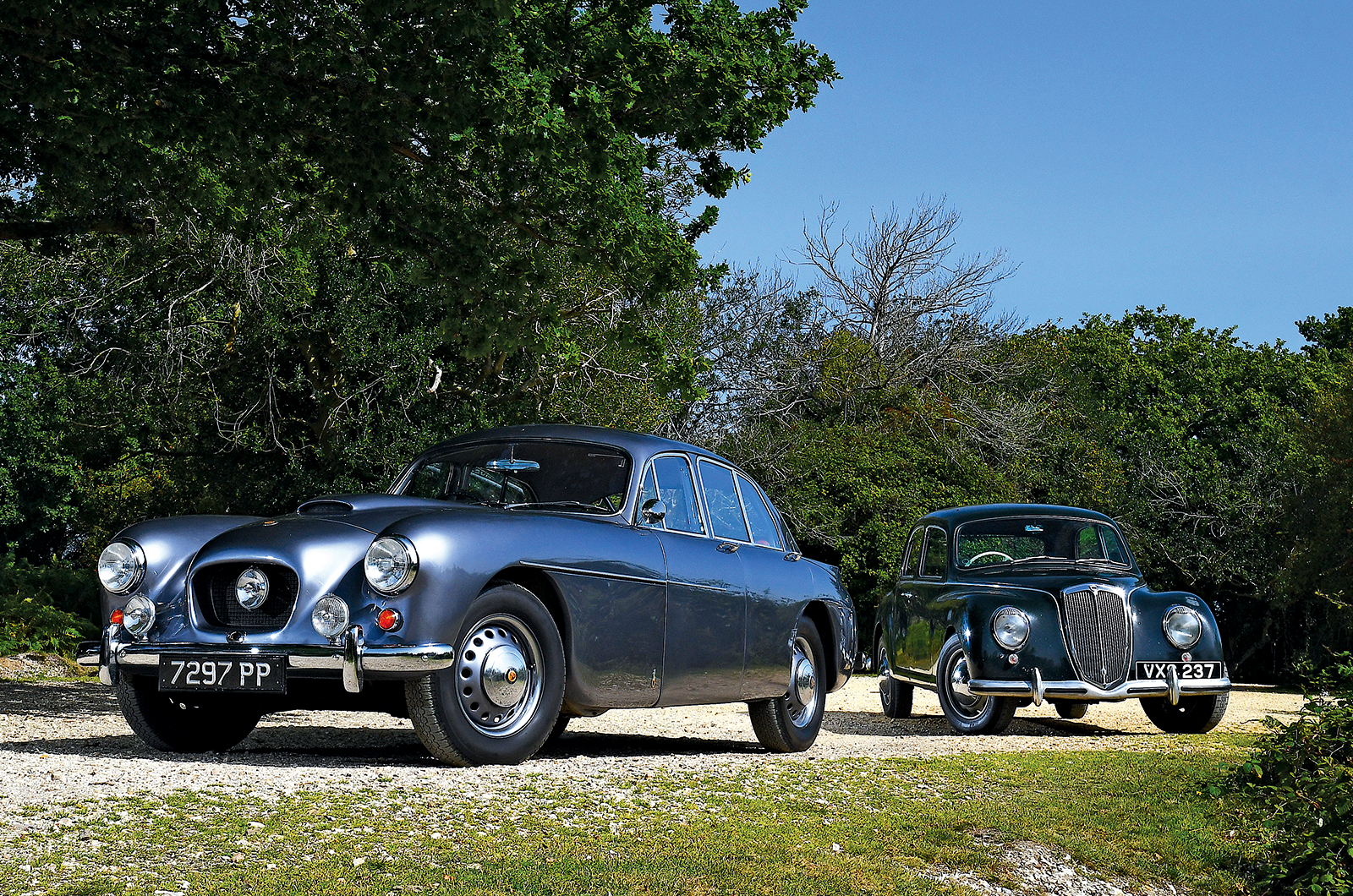It feels completely natural to take aggressive lines, and nothing seems to upset the 405’s balance.
The Bristol 405 responds well to hard cornering, despite its stately looks
On paper the Aurelia’s steering appears low-geared, at four turns from lock to lock, but it doesn’t feel it.
It rolls somewhat but always turns in beautifully, skimming the road with a lighter footprint than the Bristol and very few rattles.
Balanced 50:50 front to rear, it doesn’t load up its steering and, like so many of its predecessors, has an ability to cover ground over mixed road conditions that goes a long way to making up for its lack of outright urge.
The Bristol 405’s long front wing includes spare-wheel storage
The 405 might have been the last of the BMW-inspired Bristols, if plans for a new unitary-bodied, 3.5-litre car hadn’t been scuppered by the parent firm’s government-initiated merger into the British Aircraft Corporation.
That only 308 were built in four years (including 43 coveted Abbott-bodied dropheads) shows how Bristol’s car-making ambitions were beginning to lose momentum well before the end of the ’50s.
As the Cold War ramped up, the focus shifted back to aircraft.
At least Bristol had its aerospace contracts.
Discreet fins on the Bristol 405
In many ways, Lancia was already the walking dead by the mid-’50s, Gianni Lancia having squandered his inheritance in pursuit of racing glory, rather than investing in infrastructure that would have brought efficiency and profit to the company his father founded in 1907.
As the ’60s dawned, both Lancia and Bristol suffered from the wide availability of much cheaper machinery that appeared, if only superficially, to do most things just as well.
Snob appeal and unseen detail refinement only went so far in this more commercialised era, and both firms would learn that lesson to their cost in the painful decades to follow.
Images: John Bradshaw
Thanks to: SLJ Hackett; Mitka Engebretsen
Factfiles
Bristol 405
- Sold/number built 1954-’58/308
- Construction steel A-frame chassis, with steel, wood and light-alloy body
- Engine iron-block, alloy-head, ohv 1971cc straight-six, triple Solex carburettors
- Max power 105bhp @ 5000rpm
- Max torque 123lb ft @ 3650rpm
- Transmission four-speed manual with overdrive, RWD
- Suspension: front independent, by upper wishbones, transverse leaf spring, anti-roll bar rear live axle, torsion bars, lateral links, A-bracket; telescopic dampers f/r
- Steering rack and pinion
- Brakes drums
- Length 15ft 11½in (4864mm)
- Width 5ft 8¾in (1746mm)
- Height 4ft 9½in (1461mm)
- Wheelbase 9ft 6in (2896mm)
- Weight 2745lb (1249kg)
- Mpg 19-24
- 0-60mph 13 secs
- Top speed 105mph
- Price new £3188
- Price now £50-80,000*
Lancia Aurelia B10
- Sold/number built 1950-’52/4938
- Construction steel monocoque
- Engine all-alloy, ohv 1754cc V6, twin-choke Weber 40DCF5 carburettor
- Max power 56bhp @ 4000rpm
- Max torque 78lb ft @ 3000rpm
- Transmission four-speed manual, RWD
- Suspension independent, at front by sliding pillars rear semi-trailing arms, telescopic dampers; coil springs f/r
- Steering worm and sector
- Brakes drums
- Length 14ft 8½in (4483mm)
- Width 5ft 1½in (1562mm)
- Height 4ft 11in (1500mm)
- Wheelbase 9ft 4½in (2858mm)
- Weight 2425lb (1100kg)
- Mpg 27
- 0-60mph 22 secs
- Top speed 83mph
- Price new 1.8m lire
- Price now £20-35,000*
*Prices correct at date of original publication
Enjoy more of the world’s best classic car content every month when you subscribe to C&SC – get our latest deals here
READ MORE
Troubled succession: Lancia Aurelia and Lancia Flaminia
Your classic: Lancia Aurelia B20 GT
From the past with presence: Bristol 405 vs Lagonda 3 Litre
Martin Buckley
Senior Contributor, Classic & Sports Car
